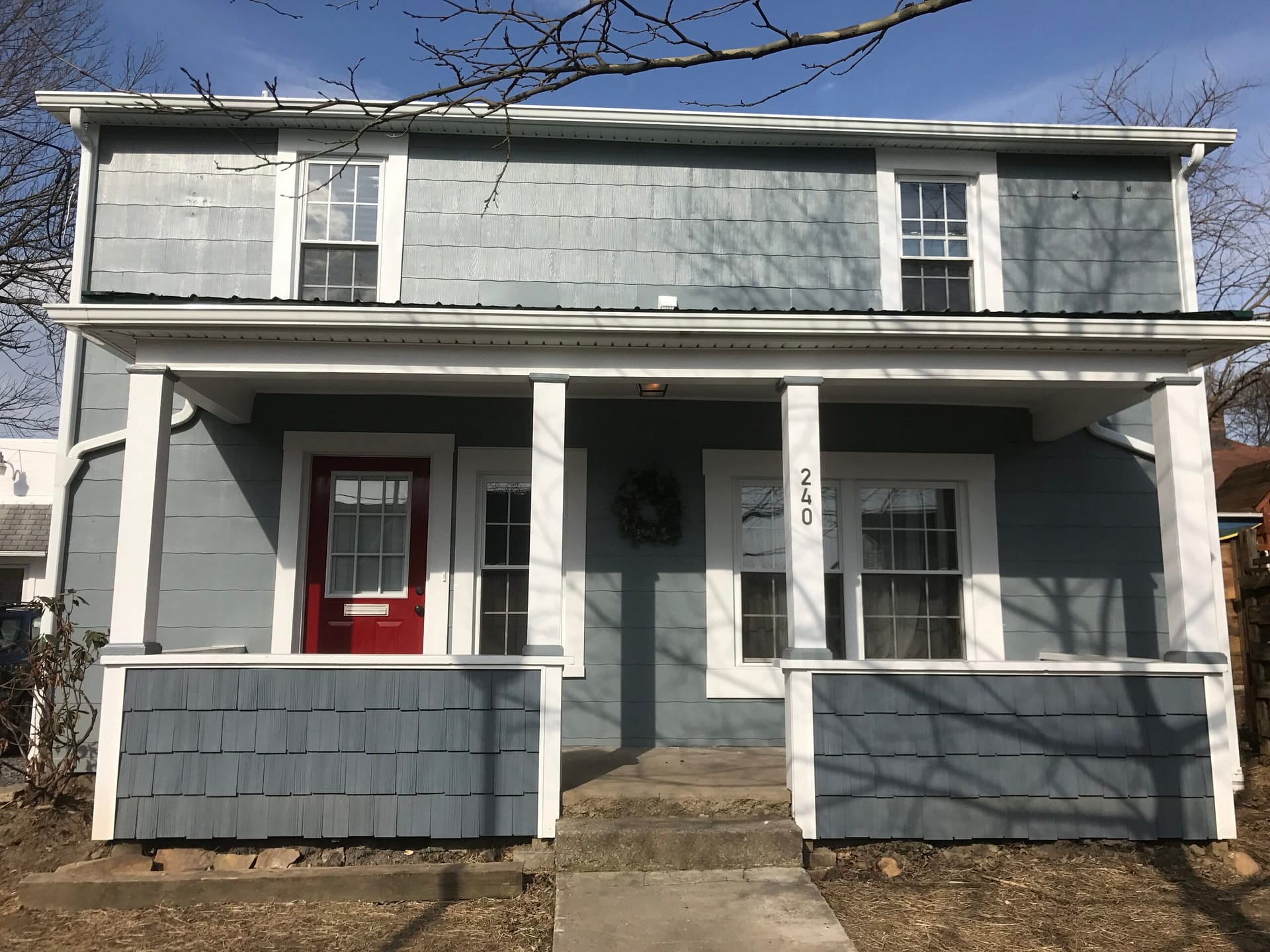

240 Green Street
I bought this house for two reasons: one to get rid of the occupants, and two for the amazingly large garage attached to the house. I paid more than what the house was worth, but expelling the residents was worth the cost. For months the house had become victim to the all too familiar results of the opioid crisis. Both users and sellers, these unfortunate addicts were a plague on our neighborhood. Any police involvement ended with a few short stints in jail only to have them released back to the same house in the same neighborhood, with the same behavior. The owner of the home was out of state and didn’t give much thought to anything outside of receiving a monthly rent check. So when the opportunity arose to make an offer on the place, I felt compelled.
I reached out to the city in order to get an inspection of the house to make sure it met all existing qualifications for a rental, but city involvement was less than enthusiastic. They knew the house was in major disrepair but still did not want to condemn it despite the porch collapsing and the roof leaking. There was an elderly woman that held the lease and paid the rent, and the idea of condemning her accommodations was less than popular. As one code enforcement officer told me, “they aren’t social workers.” After the walkthrough, however, it was clear the condition of the house was a danger. The city begrudgingly condemned it. They gave me 3 days to remove the weeds in front of the house, despite the obvious more dire biohazard of used needles everywhere. I suppose that was my punishment for pushing their hand. Either way, the residents scattered and the elderly woman was relocated. The neighborhood could breathe easy once again and that was my main objective.
The cleanup was not an easy one. Initially we collected the needles from the house in a sharps container, but by the time we reached the garage area, attempting to contain the amount of needles was impossible. The gravel floor was full of debris, and needles were scattered throughout, making it more of a hazard to try and dig them out of the ground. The garage had become the epitome of a heroin den. The following description may disturb some individuals but I find it necessary so people can understand how truly bad this situation had become. The location of this site was 2 blocks from Morgantown’s mayor. It simply illustrates that these situations can spring up anywhere, regardless of income, age, race or social status.
The garage was unheated and had no running water. To my knowledge at least two people lived in it. The elderly woman remained in the house, but the garage occupants often went in to use the facilities. There was a large king size mattress on the gravel floor. Rats tunneled under the mattress and carried bits of discarded food to their nests in the corner. Condom wrappers, used Narcan containers and empty methadone packets littered the floor. When money could not be exchanged for drugs, there appeared to be a barter system in place. A makeshift counter was set up to the side for drug prep. A few canned goods sat on an otherwise empty shelving unit. A couch, several chairs and a stool were arranged in a circle as if awaiting an innocent gathering. There was nothing innocent about the garage, it was just sad. Spoons and tin foil, cigarette butts, Mountain Dew bottles and neon sharps caps covered every surface. Everything offered an eye-opening glimpse at the life of addiction. We estimated a total of 500 used needles. It only took a couple days for word to get out that the den had closed down. We decided to get the skid steer and scoop up the trash into a dump trailer. Sorry Republic Services, but we at least warned the workers when we showed up to dump.
Most of the needles were cleaned up the first few days, but more would sporadically appear during the course of the remodel. Some fell on my head out of a drop ceiling, more were found in drawers, in the freezer and outside in the overgrown vegetation. I never went without gloves even after months of working there. And it took months to rebuild. One more year without attention and I don’t think the house would have been salvageable. One exterior wall had to be completely reconstructed from the inside, and the rat infestation was study worthy. The structure of the house was actually quite old, probably one of the first homes built in the Greenmont neighborhood. Under the horrid 1970s paneling, the house was lined in wide poplar planks, some as wide as 20 inches. It made rewiring a real treat. But after several visits from Orkin and several deliveries of drywall, the house started to take shape into a home again. Finished in March of 2018, the house is now completely restored.






























